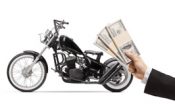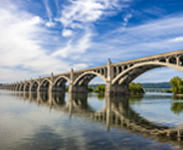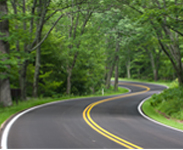Rebuilding A Carburetor
Carburetors are becoming a thing of the past since fuel injection is more efficient and mass produced on newer vehicles. Fuel injection is computer controlled and needs electrical power in order to work. Carburetors were produced in mass quantities, so there are still plenty around. There will always be those riders who prefer a mechanical carburetor to a computer controlled injection system. Carburetors can be remanufactured and rebuilt. It just takes a little patience and know-how.
The great thing about carburetors is that they are mechanical systems. They involve moving parts, springs, levers and cables. This means that when these parts are worn or defective, they can be replaced or repaired. Bushings get worn, seals give up and parts corrode, but there usually is a fix to these problems. As long as the main body of the carburetor is not severely damaged, a reconditioning can be done.
The carburetor should be drained of any fuel and removed from the motorcycle. This can get tricky depending on where it is located or if there is more than one. Usually they are bolted or clamped to an intake flange. Linkage for a multiple carburetor setup will have to be disconnected. Fuel lines will have to be disconnected and throttle cables removed. Once the carburetor is free from the motorcycle, it can be cleaned and disassembled on a bench or work table.
There are a couple types of carburetors, but motorcycle manufacturers generally use a constant velocity carburetor or a butterfly type. Both have similar components. The constant velocity type is a newer design and generally more efficient.
It is important to be diligent with every part. Some systems may have lots of ball bearings, springs, needles, etc. If any of these are lost, it will not function properly. Disassembling should be done slowly and the parts should be cataloged or placed on a towel in order. Most carburetors are held together with Philips head screws, but some may use a Torx or Allen key.
This site and articles contained herein are provided for general informational purposes only and are not a substitute or intended as professional advice. Please be sure to refer to your owner’s manual or consult a mechanic for information specific to your motorcycle. The information contained on this site and articles contained herein are provided on an “as is” basis with no guarantees of completeness, accuracy, usefulness or timeliness and without any warranties of any kind whatsoever, express or implied. Rider Insurance Company and its affiliates (together, “Rider”) assume no responsibility for any errors or omissions in the content of this site and articles contained herein. Any action taken upon this information is strictly at your own risk and Rider will not be liable for any losses or damages in connection with your use of this site and articles. Additional terms and conditions apply and are available at https://www.rider.com/plymouth-rock-assurance-general-terms-and-conditions/.

The carburetor body is usually two or three parts and when it is disassembled, the core components are accessible. Once the carburetor is disassembled, it is time to inspect its parts. The bowl, which holds the fuel, may become corroded due to ethanol and water vapor. It should be scraped and sanded clean of all the corrosion. If the metal is too far gone, it may need to be replaced. The low speed circuit is the idle jet. These come off using a jet wrench or screw driver. They are usually made of brass and can resist corrosion. It has a very fine hole drilled through it, which can become clogged. If the jet will not come clean, replacing it is fairly cheaply. The high speed circuit or main jet is similar, but consists of a larger hole. It, too, is removed the same way and cleaned or replaced. An accelerator pump may also be located in the fuel bowl. This consists of a rubber diaphragm and spring which may work improperly due to dirt and corrosion. A new diaphragm is usually part of a rebuilding kit. Under these pumps may be a check valve, which consists of a ball and spring. These should be handled carefully so as not to lose them. A float and fuel cut off needle and seat should be disassembled and cleaned. The float level should also be measured to make sure it is within manufacturers’ specifications.
On a constant velocity carburetor, the top of the body will separate to access the vacuum slide. This slide allows air to move in and out of the carburetor, as well as a needle to move within the main jet. Both of these should be inspected, cleaned or replaced. Any rubber that has deteriorated due to ethanol or dry rot should be replaced so as not to leak.
Reassembly should be done very carefully to prevent losing any pieces. All seals should be replaced. A file can be gently run over gasket surfaces to make sure they are flat and free of debris. A high detail rebuild can include replating the carburetor body and parts in zinc or chrome. Any gasket surface that is chromed will leak so it must be gone over with an abrasive. No parts should ever be forced. Gaskets and O-rings can be installed and the carburetor can be put back together. The screws holding the body together should not be over-torqued. This can distort the carburetor body and cause it to leak.
For multiple carburetor set ups, the process will be repeated. Reinstall the carburetor back onto the bike. All linkages, cables and fuel hoses can then be reattached. Tuning and syncing multiple carburetor set ups can take a while and require a lot of patience. Following a service manual is the easiest way to get the adjustments back to manufacturer specifications. Due to EPA regulations, most motorcycles run very lean from the factory. The air/fuel mixture can be adjusted to run richer and allow the motorcycle to cool better than the factory specifications. An overall carburetor job can improve the way the bike was running and result in better fuel consumption. Startups will be easier and performance upgrades can boost horsepower.





